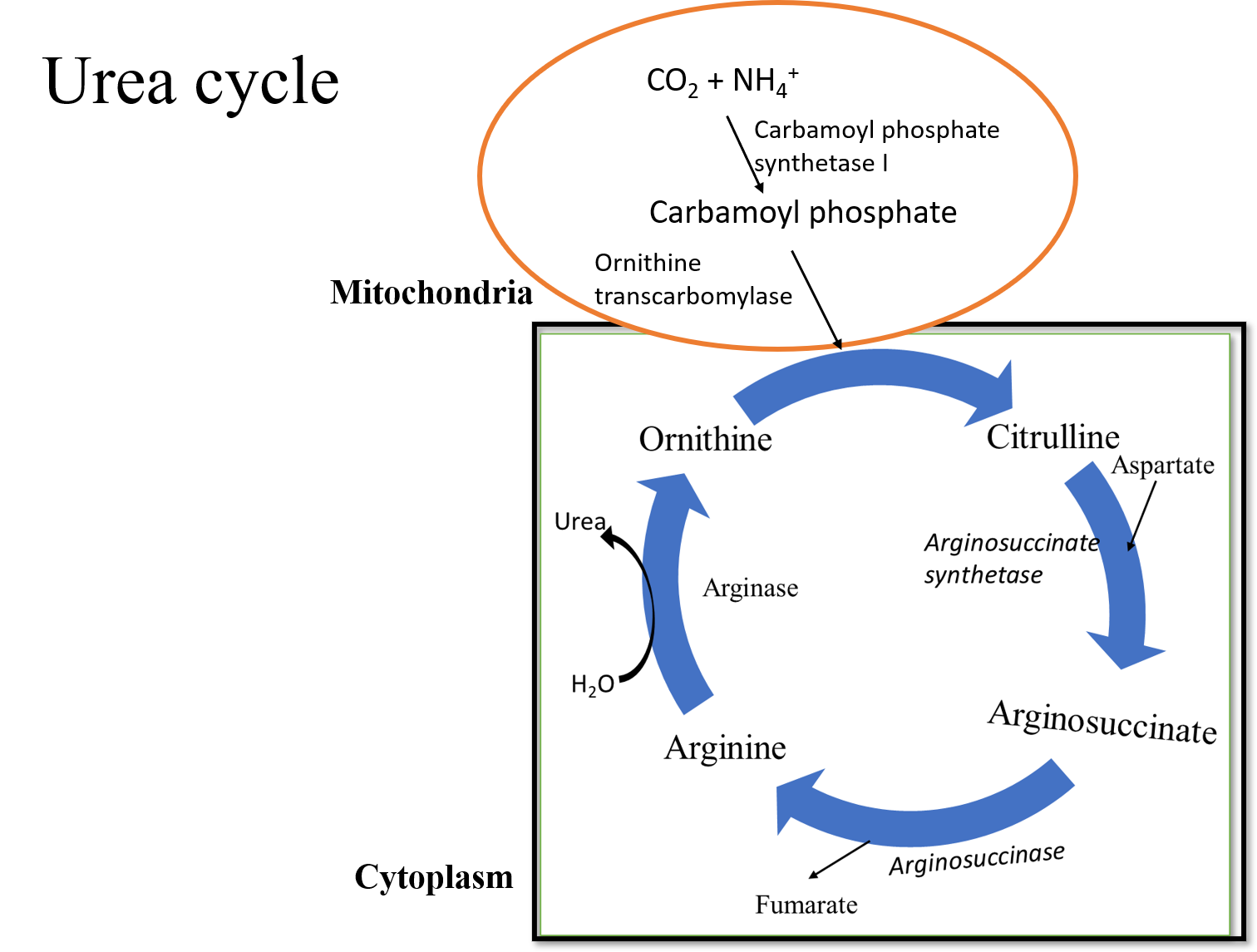
Write short notes on the ornithine cycle.
Answer
496.2k+ views
Hint: A cycle of reactions that occur due to the formation of urea from ammonia to convert it into a less toxic waste for the removal outside the body.
Complete answer:
The ornithine cycle, also known as the urea cycle which converts the highly toxic ammonia to urea for the excretion. It occurs mostly in uricotelic organisms. Most aquatic organisms, or ammonotelic animals, excrete ammonia without converting it into urea. This occurs because of the amino acid catabolism which results in the formation of ammonia as a waste product.
The organisms need to remove this ammonia waste product from their body as it is highly toxic. Few organisms cannot easily remove nitrogen from ammonia, these organisms convert the ammonia into less toxic substances like urea and uric acid with the help of the ornithine cycle. This cycle occurs mainly in the liver of an organism.
The urea produced in the liver is then passed into the bloodstream from where it travels to the kidneys and gets filtered resulting in the excretion of the urine. The ornithine cycle is very significant in the case of those organisms which cannot convert ammonia into urea and this will become deadly for the organism.
The ammonia which is converted into uric acid is mostly excreted in the solid form. This cycle is generally found in birds and insects.

Note: During protein metabolism, excess nitrogen is eliminated from nitrogen compounds resulting in nitrogenous wastes. These nitrogenous wastes can be ammonia, urea, uric acid, and creatinine. The organisms which excrete ammonia are called ammonotelic, those organisms which excrete urea are called ureotelic, and those organisms which excrete uric acid are called uricotelic.
Complete answer:
The ornithine cycle, also known as the urea cycle which converts the highly toxic ammonia to urea for the excretion. It occurs mostly in uricotelic organisms. Most aquatic organisms, or ammonotelic animals, excrete ammonia without converting it into urea. This occurs because of the amino acid catabolism which results in the formation of ammonia as a waste product.
The organisms need to remove this ammonia waste product from their body as it is highly toxic. Few organisms cannot easily remove nitrogen from ammonia, these organisms convert the ammonia into less toxic substances like urea and uric acid with the help of the ornithine cycle. This cycle occurs mainly in the liver of an organism.
The urea produced in the liver is then passed into the bloodstream from where it travels to the kidneys and gets filtered resulting in the excretion of the urine. The ornithine cycle is very significant in the case of those organisms which cannot convert ammonia into urea and this will become deadly for the organism.
The ammonia which is converted into uric acid is mostly excreted in the solid form. This cycle is generally found in birds and insects.

Note: During protein metabolism, excess nitrogen is eliminated from nitrogen compounds resulting in nitrogenous wastes. These nitrogenous wastes can be ammonia, urea, uric acid, and creatinine. The organisms which excrete ammonia are called ammonotelic, those organisms which excrete urea are called ureotelic, and those organisms which excrete uric acid are called uricotelic.
Latest Vedantu courses for you
Grade 11 Science PCM | CBSE | SCHOOL | English
CBSE (2025-26)
School Full course for CBSE students
₹41,848 per year
Recently Updated Pages
Master Class 9 General Knowledge: Engaging Questions & Answers for Success

Master Class 9 English: Engaging Questions & Answers for Success

Master Class 9 Science: Engaging Questions & Answers for Success

Master Class 9 Social Science: Engaging Questions & Answers for Success

Master Class 9 Maths: Engaging Questions & Answers for Success

Class 9 Question and Answer - Your Ultimate Solutions Guide

Trending doubts
State and prove Bernoullis theorem class 11 physics CBSE

What are Quantum numbers Explain the quantum number class 11 chemistry CBSE

Write the differences between monocot plants and dicot class 11 biology CBSE

Who built the Grand Trunk Road AChandragupta Maurya class 11 social science CBSE

1 ton equals to A 100 kg B 1000 kg C 10 kg D 10000 class 11 physics CBSE

State the laws of reflection of light




